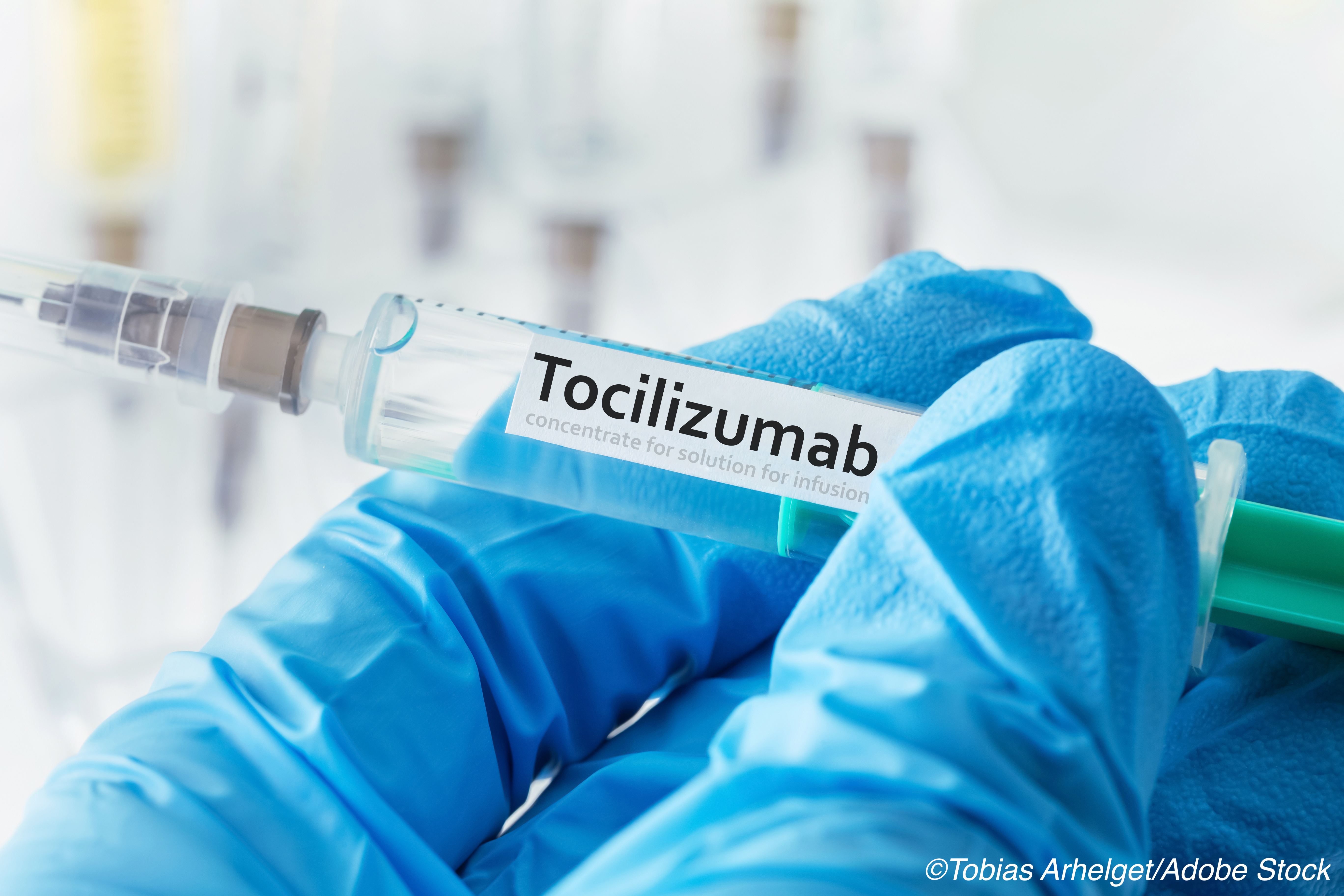 Hospitalized Covid-19 patients treated with tocilizumab (8 mg/per kilogram) did not fare better than control patients, according to results from a randomized, placebo-controlled trial.
Hospitalized Covid-19 patients treated with tocilizumab (8 mg/per kilogram) did not fare better than control patients, according to results from a randomized, placebo-controlled trial.
The primary outcome measure was intubation or death, assessed as time to event.
John H. Stone, MD, MPH of Massachusetts General Hospital and colleagues randomized 161 patients to receive a single dose of tocilizumab plus standard therapy and 81 to receive placebo plus standard therapy. Standard therapy included remdesivir, hydroxychloroquine, or corticosteroids with no significant between group difference in use of those background therapies.
“At day 28, 17 patients (10.6%) in the tocilizumab group and 10 patients (12.5%) in the placebo group had been intubated or had died (11 were intubated and 6 died without being intubated in the tocilizumab group; 8 were intubated and 2 died without being intubated in the placebo group)… The hazard ratio for a primary outcome event in the tocilizumab group was 0.83 (95% confidence interval [CI], 0.38 to 1.81; P=0.64 by log-rank test),” Stone et al wrote in The New England Journal of Medicine.
“The hazard ratio was also estimated with adjustment for age, sex, race, Hispanic or Latino ethnic group, diabetes status, and baseline serum interleukin-6 concentration,” they added. “The adjusted hazard ratio was 0.66 (95% CI, 0.28 to 1.52). The difference between the adjusted and unadjusted hazard ratios was primarily due to the greater percentage of older patients in the tocilizumab group.”
In the overall group, the median age was 59.8 years, and the age range was 21.7 years to 84.5 years. “In the overall trial population, 45% of patients were Hispanic or Latino, 16% were Black, and 43% were White,” the authors explained.
Stone and colleagues cautioned that, due to the “width of the confidence intervals for the efficacy comparisons… we cannot exclude the possibility that tocilizumab treatment is associated with some benefit or harm in some patients.”
The secondary outcome measure — time to worsening—also found no significant benefit. “At 14 days, 18.0% of the patients in the tocilizumab group and 14.9% of the patients in the placebo group had had disease worsening as measured on the ordinal scale,” they wrote. “At 28 days, the percentages were 19.3% and 17.4%, respectively.”
Likewise, there was no significant widening of the curves measuring need for supplemental oxygen: looking at patients who were receiving oxygen at baseline, the median time to discontinuation in the tocilizumab arm was 5 days versus 4.9 days in the control group. “At 14 days, 75.4% of patients in the tocilizumab group and 78.8% in the placebo group were no longer receiving supplemental oxygen. At 28 days, the percentages were 82.6% and 84.9%, respectively,” they found.
Stone and colleagues pointed out that their findings, while disappointing, are also yet another example of how positive findings from observational studies evaporate when put to the test in rigorous randomized trials.
“Reported but still unpublished results of a small number of other randomized trials have been discouraging,” they wrote. “The explanation for the failure of tocilizumab to affect clinical outcomes substantially in our trial is not clear. One possibility is that interleukin-6 and other inflammatory proteins that are observed to be present at elevated levels in patients with Covid-19 represent host responses to the infection, similar to the elevations in cytokine levels seen in patients with endocarditis, sepsis, and other infections, rather than components of a self-amplifying inflammatory loop that would benefit from suppression. Regardless of the explanation, our findings in the context of information about other randomized, blinded trials of interleukin-6 receptor blockade largely undermine the concept that this anticytokine approach is a useful treatment strategy for preventing the evolution of Covid-19 from a moderate to a severe state.”
The trial did, however, confirm that higher serum interleukin-6 concentrations at baseline are a marker for poor outcome.
The researchers noted that the primary event rate in the trial was lower than anticipated, which was a weakness of the trial. They suggested that early use of remdesivir may have contributed to the lower event rate. Also, randomization failed to eliminate an imbalance between the study arms so that the tocilizumab arm had more elderly patients.
- Be aware that findings from this study undermine the concept that the tested anticytokine approach is a useful treatment strategy for preventing the evolution of Covid-19 from a moderate to a severe state.
- Note that the event rate in this trial was lower than anticipated, which may reflect improved treatment protocols — including use of remdesivir — for hospitalized Covid-19 patients.
Peggy Peck, Editor-in-Chief, BreakingMED™
The study was funded by Genentech.
Stone reported grants from Genentech during the conduct of the study; grants and personal fees from Principia Biopharma, grants from Viela , personal fees from Sanofi, personal fees from Chemocentryx, personal fees from Celgene, personal fees from Abbvie, personal fees from Chugai, personal fees from Grunenthal, personal fees from Glaxo Smith Kline, personal fees from InflaRx, personal fees from INSmed, personal fees from Regeneron, grants and personal fees from Roche, and personal fees from Roivant outside the submitted work.
Cat ID: 190
Topic ID: 79,190,791,932,190,926,192,927,928,925,934


